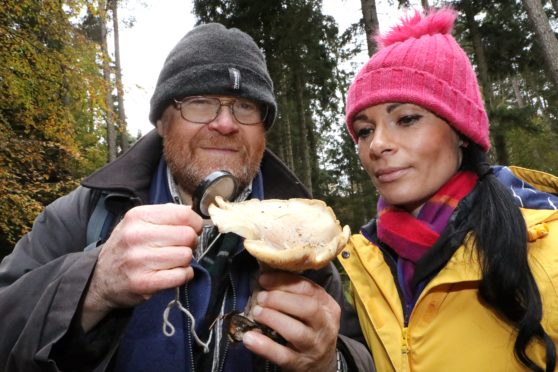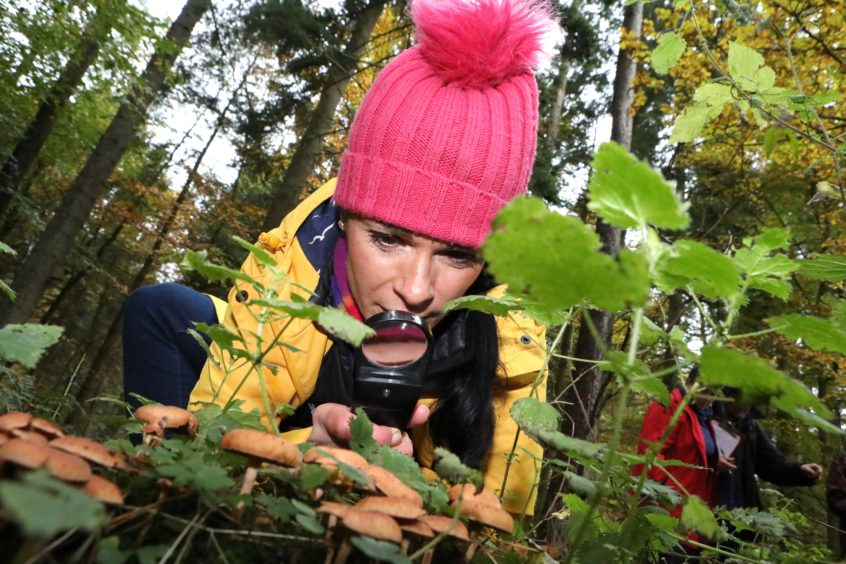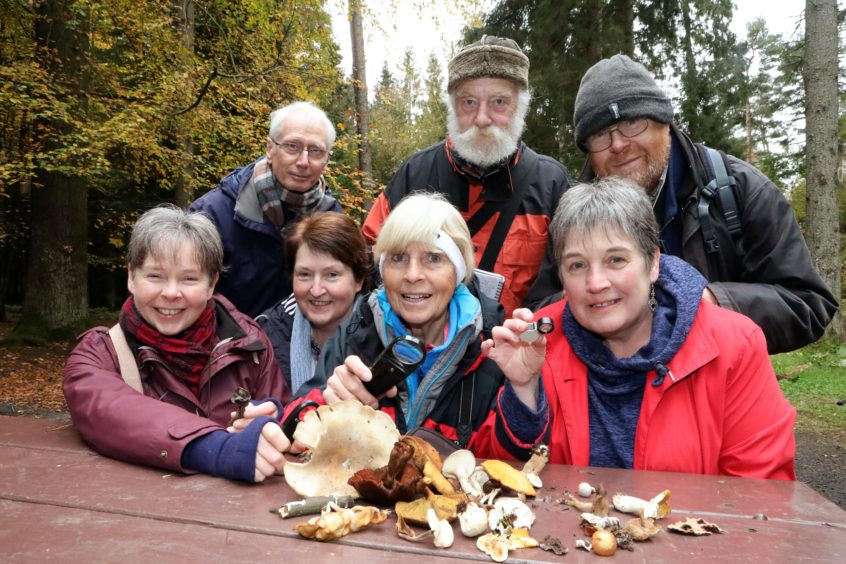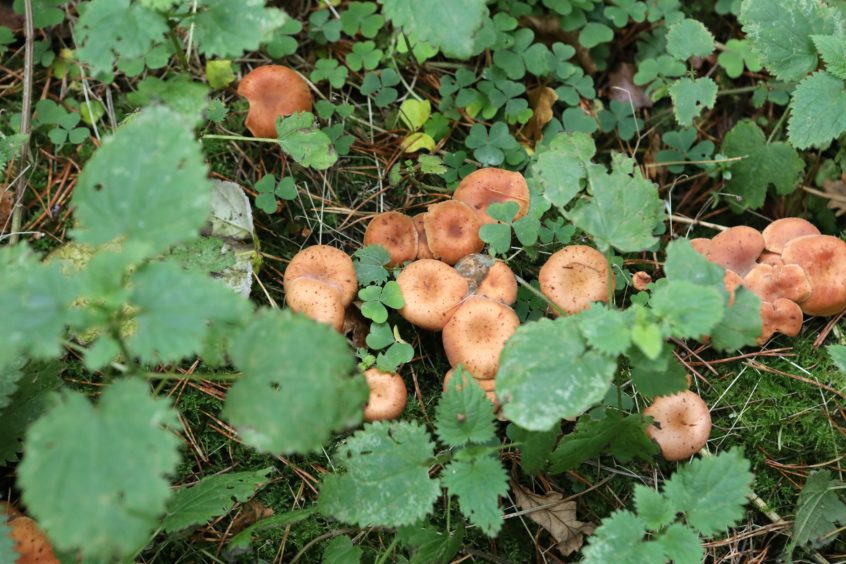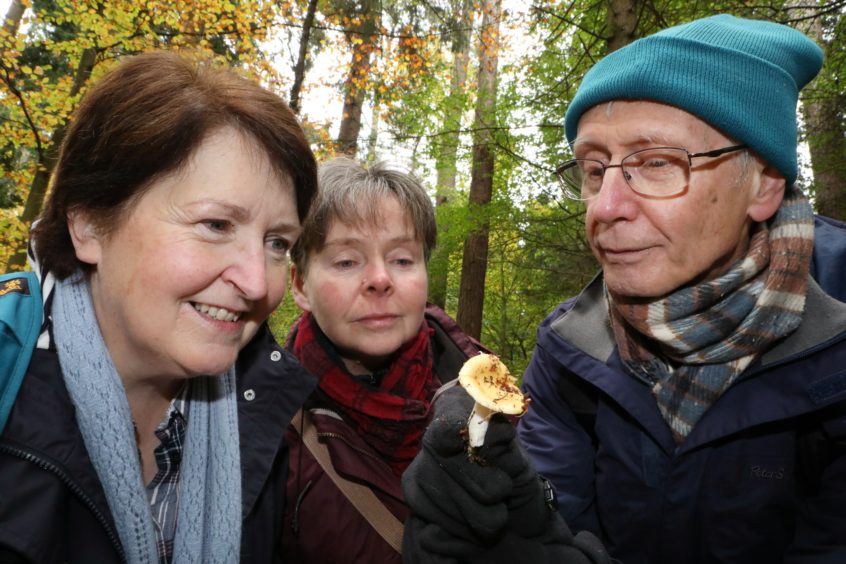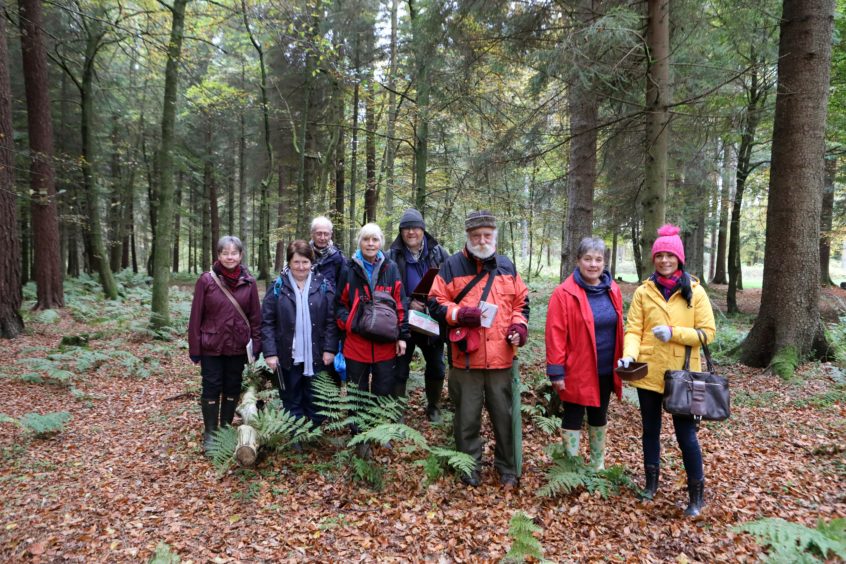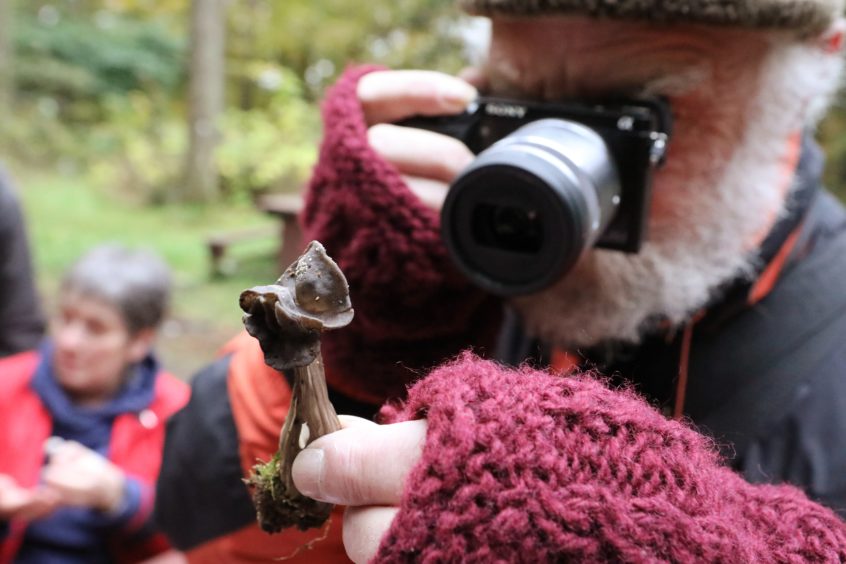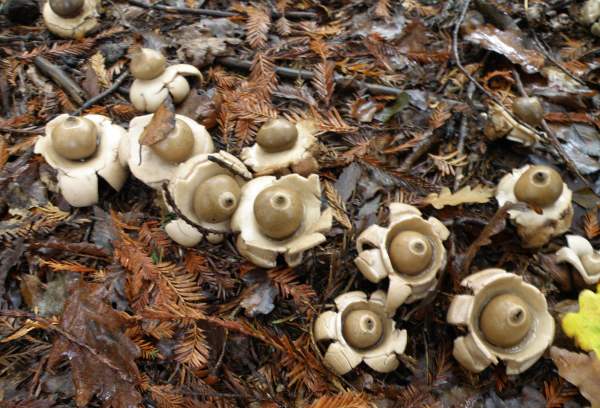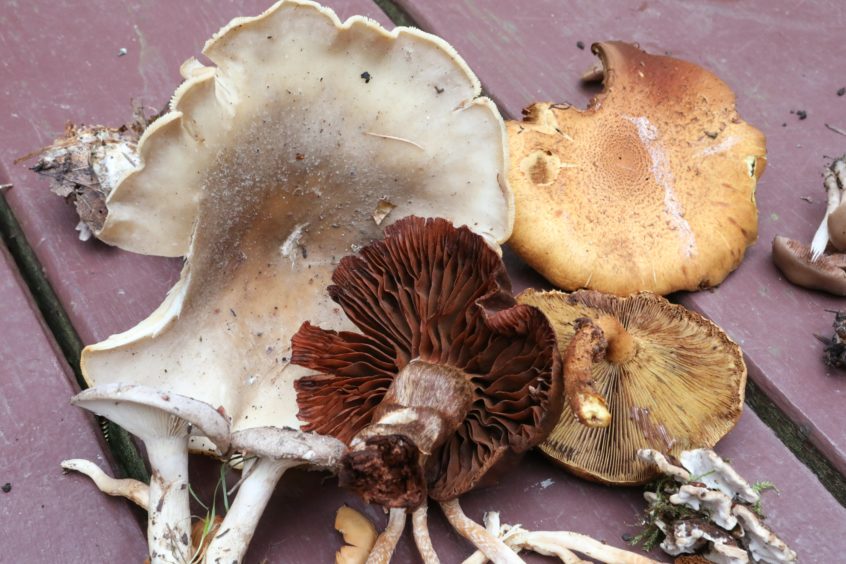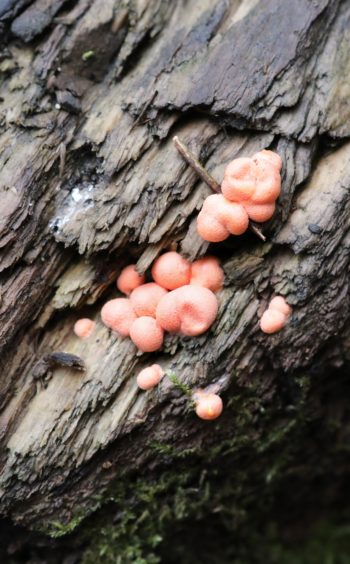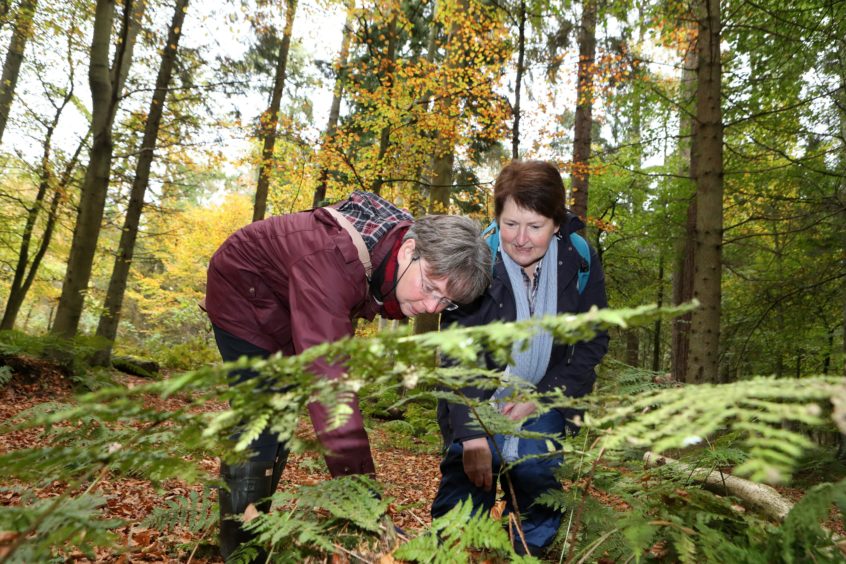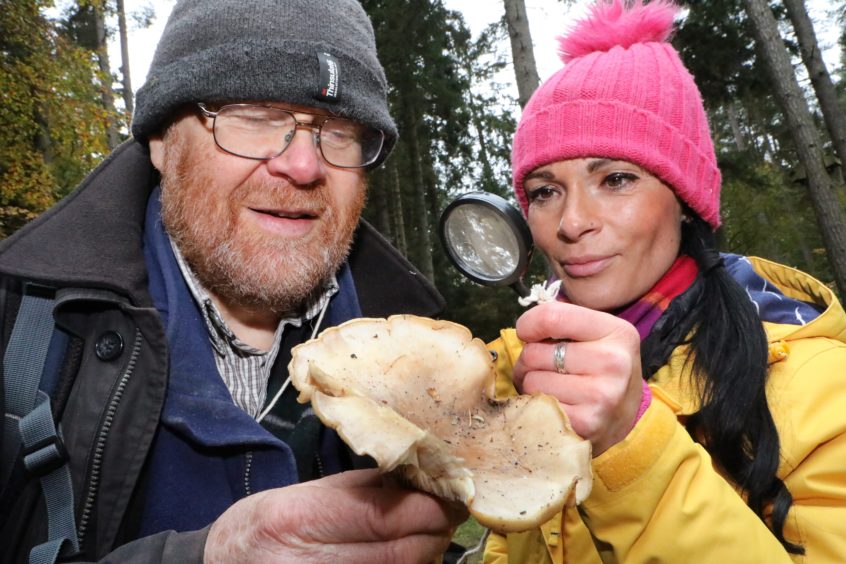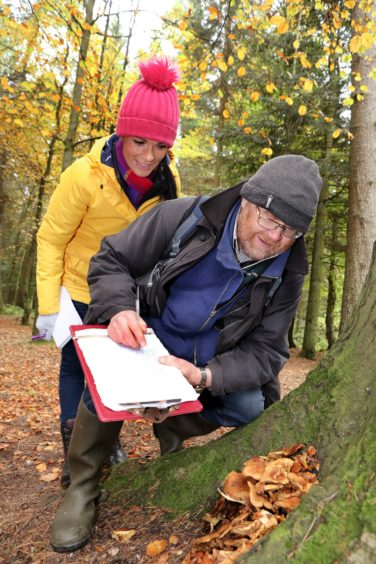Autumn is a great time to seek out some fabulous fungi, as Gayle discovers when she heads out to discover the magic of mushrooms…
From the iconic fairytale red and white-capped fly agaric mushroom to the grotesque dyemaker’s puffball (also known as the dog turd fungus), there are millions of types of fungi just waiting to be discovered.
One of the best things about them, in my humble opinion, is that they are all blessed (or cursed) with weird and wonderful names.
A quick search online brings up, among other species, hairy nuts disco, goblet parachute, bedstraw smut, powdery piggydust, devil’s fingers, weeping toothcrust, witch’s butter, bitter poisonpie, contorted strangler, and hairy earthtongue.
Let’s face it – most of these sound like they could be ingredients for a Harry Potter potion!
I came face-to-face with dozens of fantastic local specimens when I joined Tayside and Fife Fungal Group for a foray in Templeton Woods near Dundee.
The group, led by locally-renowned botanist Jim Cook, aims to record fungi and encourage an interest in its importance.
As we wander deep into the forest, one group member sets eyes on a patch of marshmallow slime mould bubbling up on a rotting stump. “It looks like sets of boobs!” she exclaims with a giggle.
We then stumble upon some shaggy scalycaps which have taken up residence at the foot of a conifer tree. Apparently these are notorious root parasites.
Pointing to a weird, yellow gelatinous fungus which is forked at the top, Jim reveals this is yellow stag’s horn.
“I’ve yet to see a stag that colour or with antlers like that!” he laughs.
Other species we find include grey grisette’s cap, which group member Ellis Armstrong says translates as something like: “the hat of a woman of ill repute”, and heart rot, a fungal disease which decays the centre of trunks and branches.
We also find honey fungus, plums and custard, eyelash fungus, brittle gills, elfin’s saddle, amethyst deceiver, candle snuff, turkey tail, wood woolly-foot and purple jelly disc. Indeed, the world of fungi is a lexicographer’s dream!
Group members usually observe the fungus in situ and take photographs, although there are times when Jim takes some away for further identification using a microscope and stereo magnifier.
He will also sometimes dry out fungus for use in talks and demos.
“Picking them doesn’t really damage them,” Brian Williamson, a retired plant pathologist, reassures me, as he gently pulls out the cap of a clouded funnel.
“They’re fruiting bodies and you only see some of what’s growing above ground, but there’s an underground network known as the ‘wood wide web’ where many, many more grow.”
As we head towards a rotten tree trunk, Helen Bell spots some weird black threads.
“We call these the ‘bootlaces’ of honey fungus and they’re rope-like structures which can travel a vast distance and destroy trees,” explains Jim.
“These threads are known as mycelium and thread through the soil and trees.”
Another freakish yet pretty species spotted by Alison Keeble is beech milk cap. It grows only on beech trees and bleeds a weird, milk-like viscous substance.
Brian tells me how fungi fire off microscopic spores “explosively” into the atmosphere, allowing for reproduction, serving a similar purpose to that of seeds in the plant world.
While fungi can be damaging to trees, some can help trees and plants to grow.
It gets rather complex but in essence, the fine threads that make fungal mycelium can capture water and nutrients from far away and bring them back to the plants roots.
The roots take up the water and nutrients offered by the fungi and, in return, the trees and plants give the fungi sugars made during photosynthesis.
“It’s a relationship, says Brian. “And fungi can also be a source of food for squirrels and other animals.”
While looking for fungi is great fun, you need to be extremely careful when it comes to eating it because many species can be toxic and, in some cases, deadly.
“One bite of a death cap mushroom can kill you, while other fungi can destroy your kidneys,” says Jim. “We really want to get that message across. It’s a stark warning.”
Of course, Jim knows his stuff so he frequently cooks his findings and is particularly fond of blewits and chanterelles.
As our session comes to an end, Ellis brings out a collection of earthstar mushrooms which he found growing in his garden in Dundee.
They’re a close relative of the puffball fungi, thus named because clouds of brown dust-like spores emit when the fruiting body bursts or is hit by a raindrop.
“Touch it and see what happens,” encourages Jim, and I have a bash. I shriek in delight when, as predicted, spores puff through the opening! Ah, simple pleasures!
There’s great pleasure to be gained in feasting your eyes on the freakishness of fungi and it’s exciting, too, because you never know what you might find.
“In the same way as some people enjoy looking at plants and birds, we enjoy looking at fungi,” says Jim.
“There’s joy in finding new and strange species and understanding the biology behind it all. They’re the biggest recyclers in ecology.”
While frost can damage some fungi, autumn and winter can be a great time to spot robust species.
During December and January, look out for clusters of winter fungus on rotting stumps and fallen logs, particularly those of elm, ash, beech and oak. The fruiting bodies of this fungus appear during the coldest months.
info
Tayside and Fife Fungal Group was set up five years ago and boasts around 20 members. It runs forays all over Tayside and Fife with recent trips made to St Cyrus, Tentsmuir Forest, Faskally Woods, Guardbridge Woods, Logierait and Dunkeld. The group, which also hosts workshops and talks, is keen to hear from anyone keen to get involved. It’s free to join, no knowledge of fungi is needed and all ages are welcome. See facebook.com/taysidefifefungi/ or email jim.strath91@gmail.com
